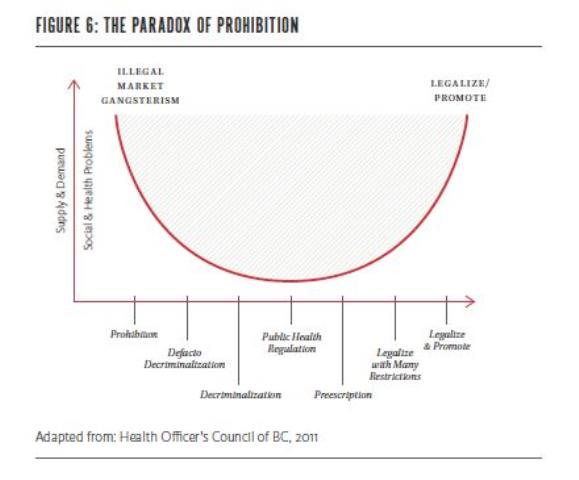I am 33 years old, married, a university graduate, and a business professional. I also have Crohn’s Disease, and I have used marijuana to treat ongoing symptoms such as pain, nausea, lack of appetite, and low energy. I do not use “medical” marijuana, but rather the dispensaries that currently fall under a grey area of legality in BC. I take no other pharmaceuticals for my Crohn’s Disease, and am able to control it with diet and a healthy lifestyle. I have chosen to write this blog as anonymous because unfortunately, there is still a fair amount of stigma, stereotypes and misinformation surrounding the “typical” marijuana user (and I think my parents would kill me).
I started using marijuana as part of my treatment when I was 26. My doctor informed me I was underweight and needed to gain about 15 lbs. The problem was, I couldn’t eat. My stomach would turn at the thought of eating, and I would often throw up after meals. I started smoking a very minuscule amount of weed before dinner so that I could not only eat, but enjoy eating again. It worked like a charm.
However, I struggled to find a reliable source of marijuana. I did not like the idea of going to a dealer. It was shady and illegal and I was never quite comfortable with it (though it was never very difficult to come by). My GP at the time was not open to prescribing medical marijuana to me, and I felt extremely judged! She was very closed minded about the medical benefits of marijuana despite the living proof standing right in front of her, 15 lbs heavier and healthier than before.
In 2011, a friend took me to a medical marijuana dispensary in downtown Victoria. She was a member there due to ongoing and severe debilitating back pain, which would put her on the floor for days at a time. To become a member at the dispensary, I simply needed proof of my condition and photo ID. Crohn’s is classified as Category 2 symptom on the Health Canada info page on medical marijuana. I brought in proof of my condition, sat through a 45-minute orientation and happily became a full-fledged member of the Victoria Cannabis Buyers Club. The role of the dispensary is to serve those who have legitimate conditions that can be treated by marijuana, but whose doctors will not prescribe it. They offer an incredible selection of products, including dried smokeables, edibles, oils, creams, compresses, and capsules. I tend to favour their Cannoil, which is made specifically to treat upper gastrointestinal disorders, and has provided me relief from not only nausea, but also severe cramping and bouts of diarrhea. The staff is friendly and knowledgeable on recommending the different strains to best suit your specific needs. As for the clientele, you’d perhaps be surprised to know that more often than not, it’s other “normal” people, business professionals, moms and grandparents seeking relief from what ails them.
Will I seek eligibility for medical marijuana? Perhaps one day, though I feel less inclined to now. I am a light user, and I like the convenience and selection of products that are on offer at the dispensary. I will probably also start growing my own, when I have suitable space to do so, so that I may control exactly what is in my medicine.
Though currently not using, marijuana will always be a part of my wider treatment plan. It’s enabled me to avoid harsh pharmaceuticals that are, in my opinion, far worse for me than something that has been grown naturally from the earth.
Further information on Crohn’s and Marijuana can be found here:
Treatment of Crohn’s Disease with Cannabis: An Observational Study
Cannabis Alleviates Symptoms of Crohn’s Disease
Medical Marijuana for Crohn’s Disease
Medical Marijuan & Crohn’s Disease—Getting your Doctor to Sign Health Canada’s Paperwork
*Please note that the material presented here does not necessarily imply endorsement or agreement by individuals at the Centre for Addictions Research of BC
Author: Anony Mous



